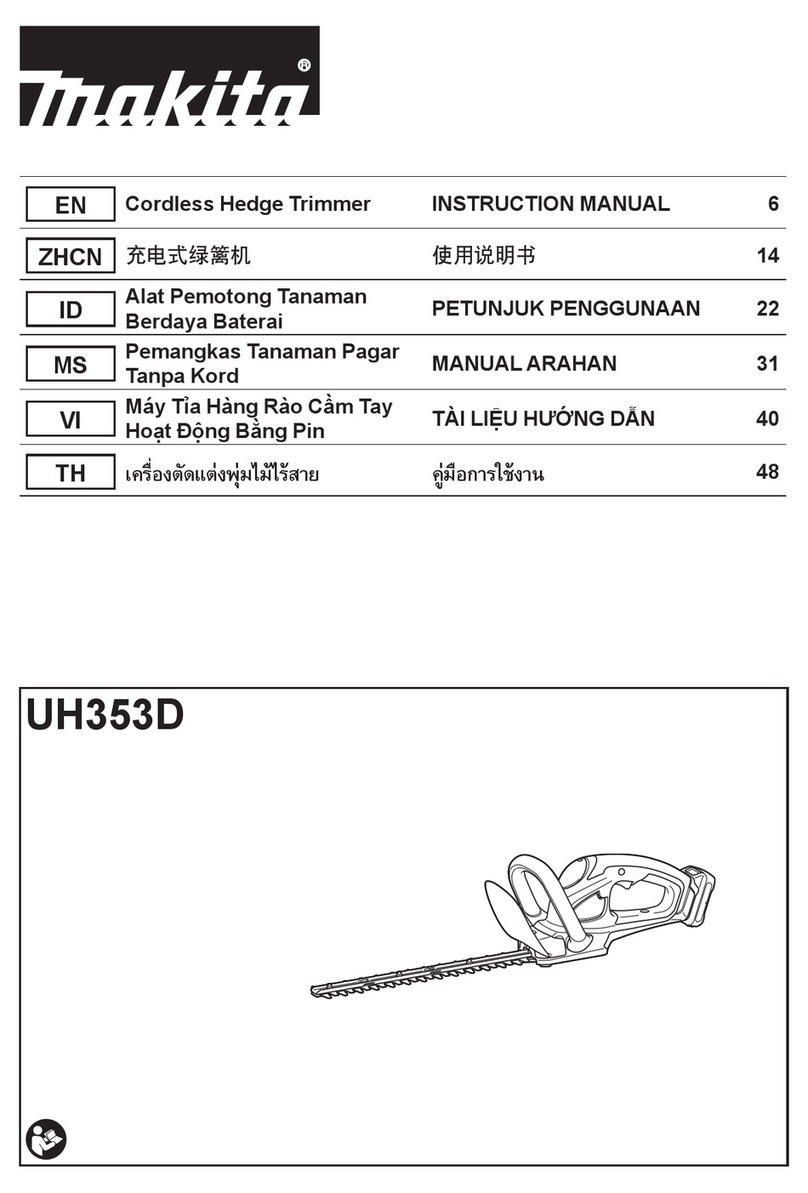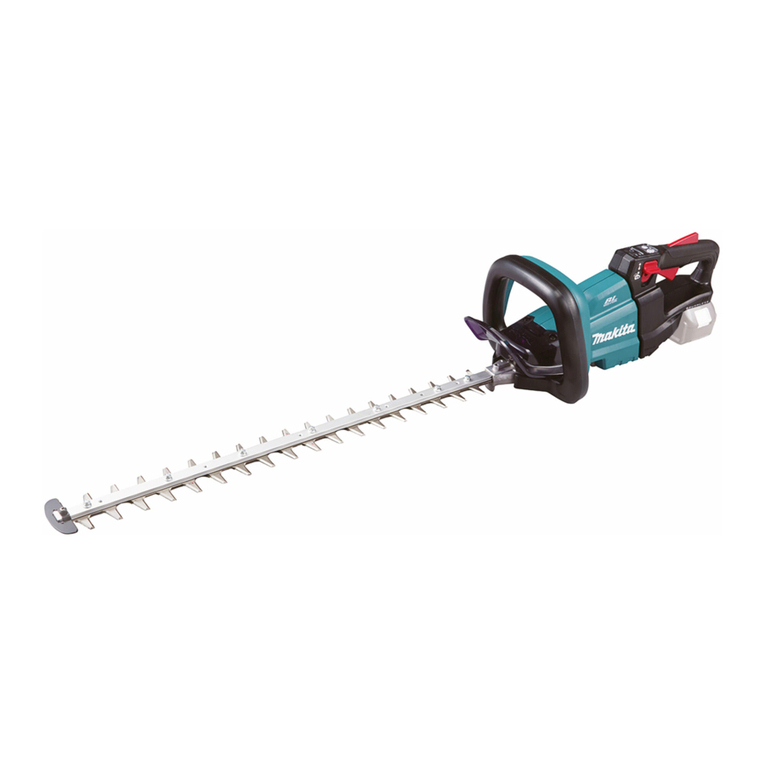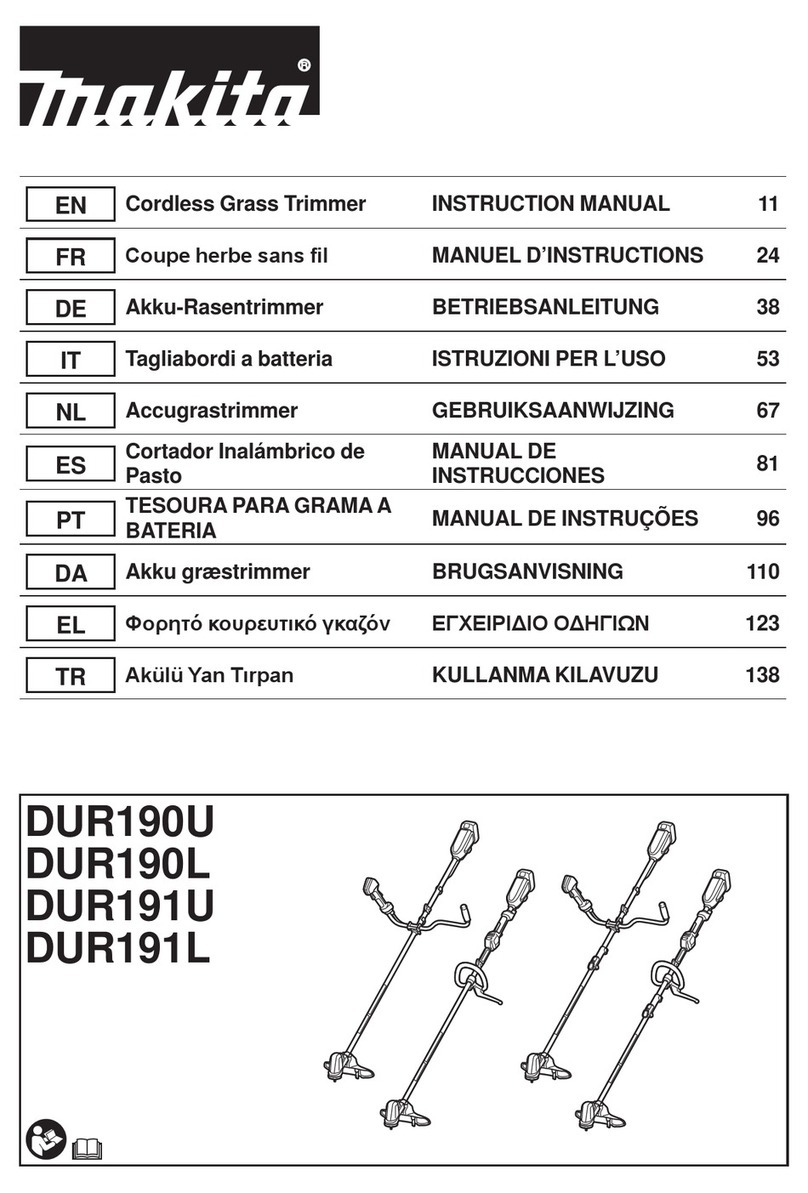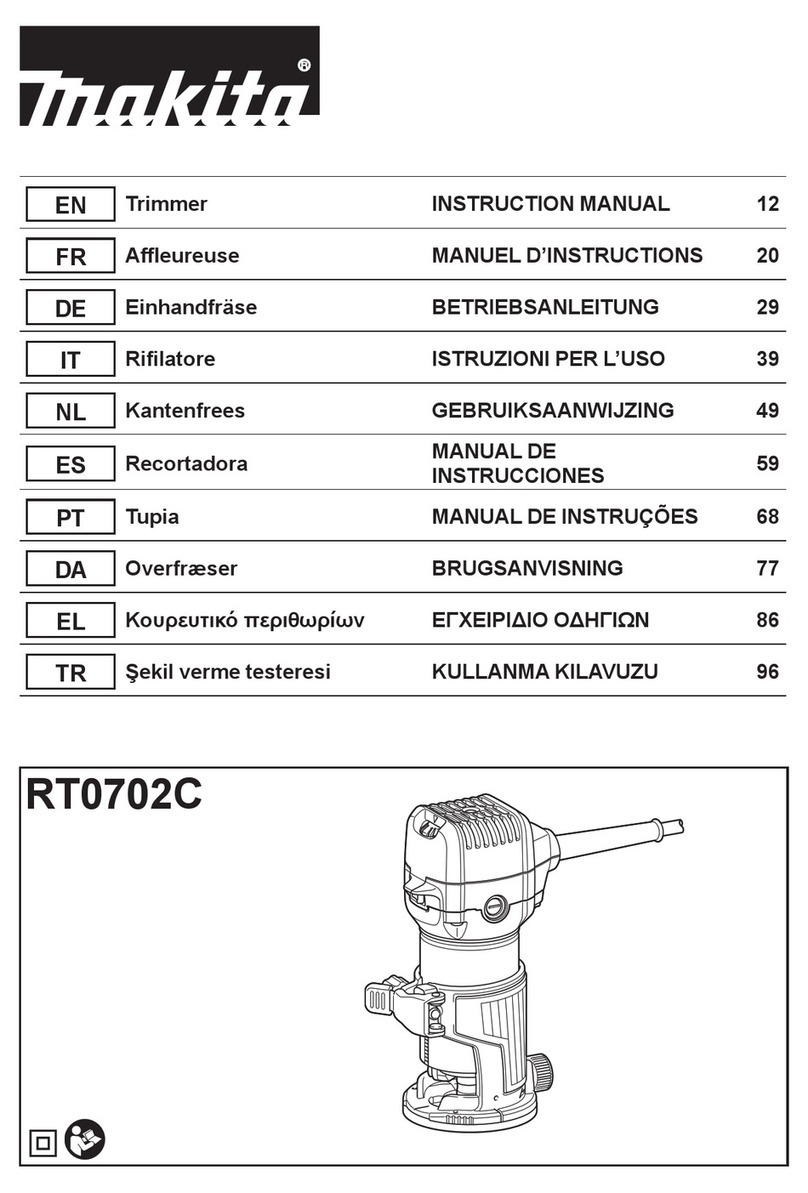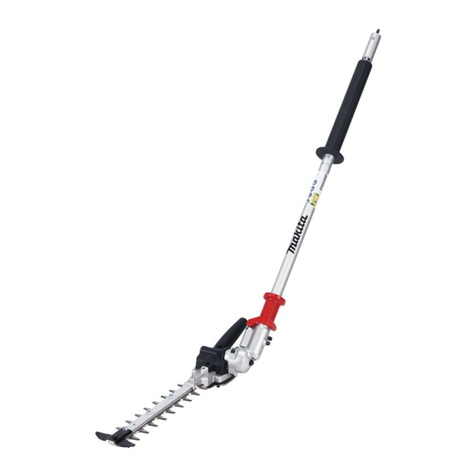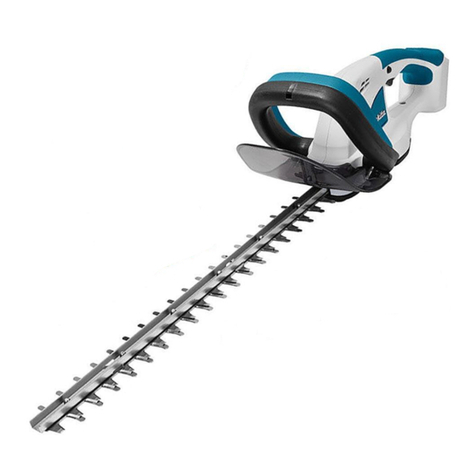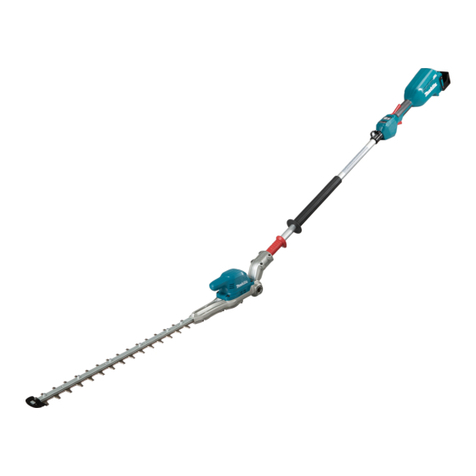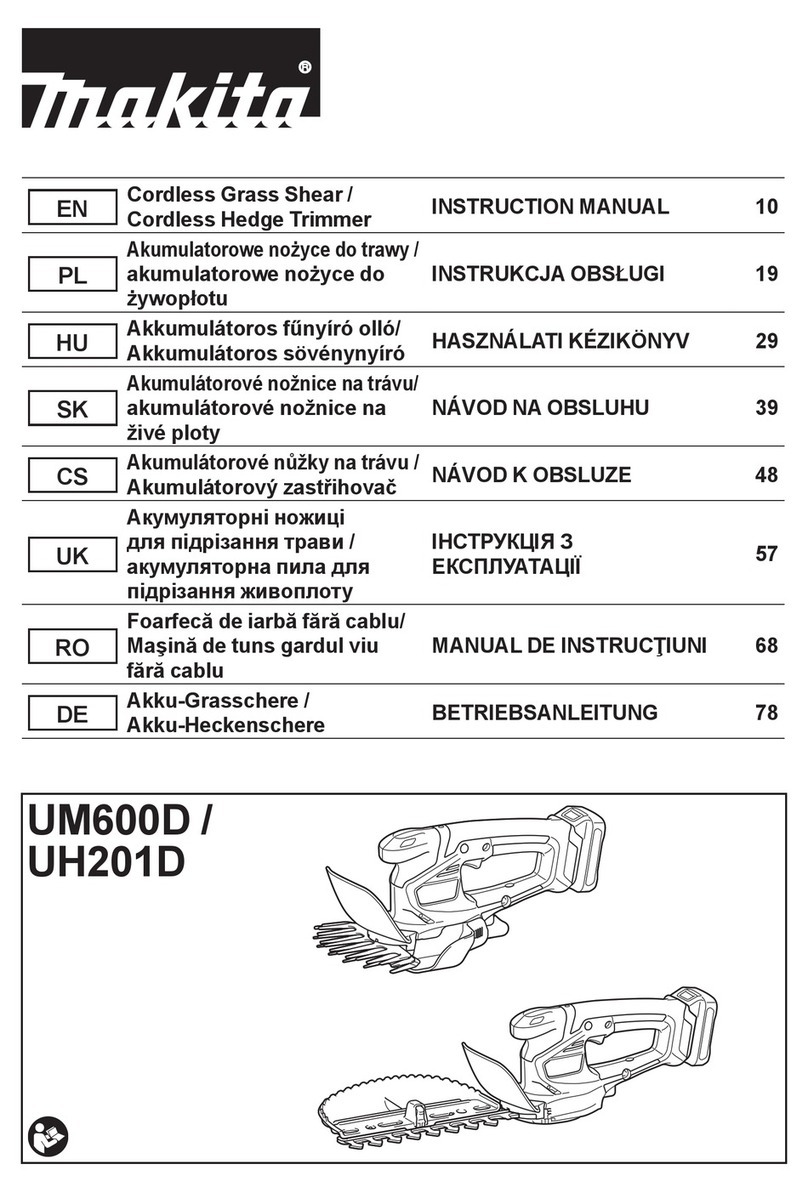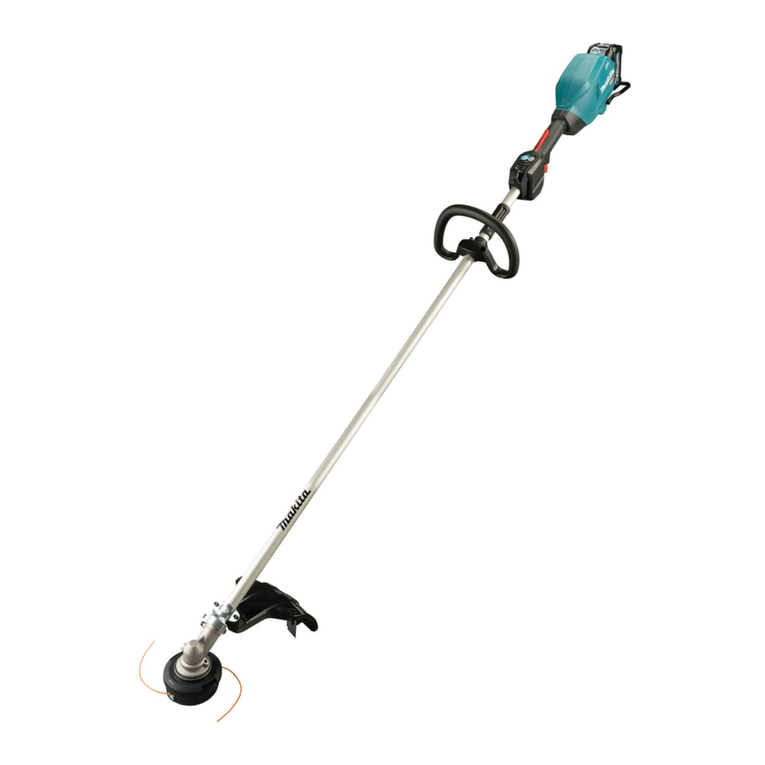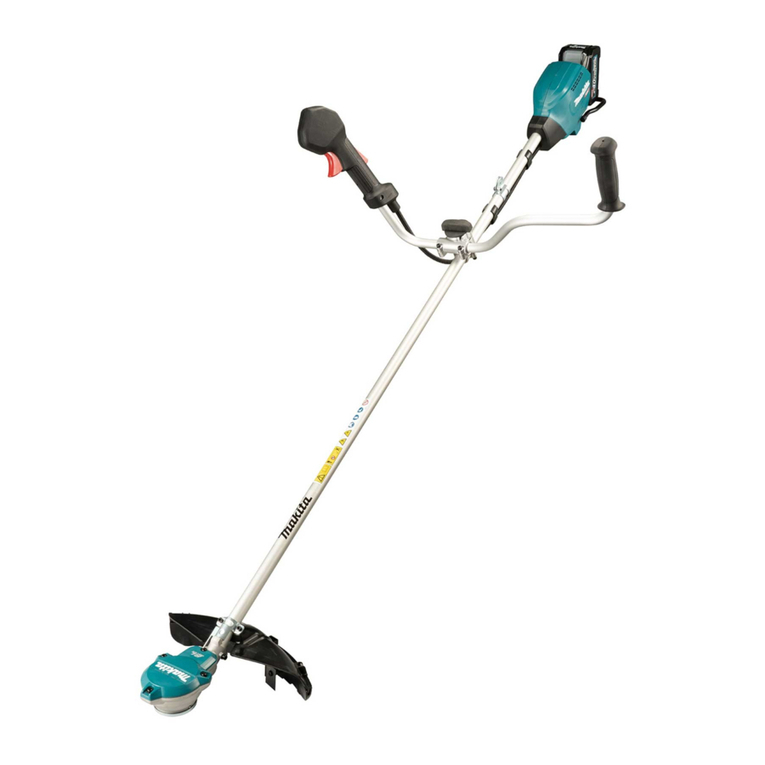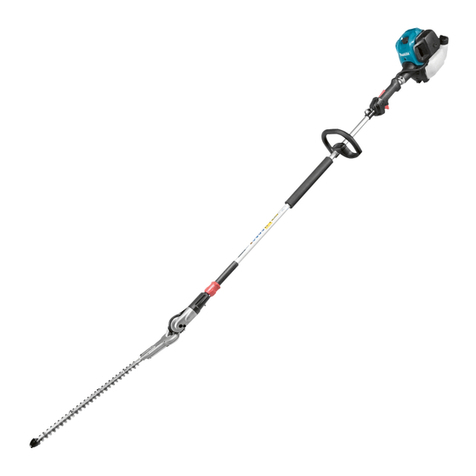
10 ENGLISH
Model DUN600L
Sound pressure level (LpA):82.5dB(A)
Sound power level (LWA):93.5dB(A)
Uncertainty(K):3dB(A)
NOTE:Thedeclarednoiseemissionvalue(s)has
beenmeasuredinaccordancewithastandardtest
methodandmaybeusedforcomparingonetoolwith
another.
NOTE:Thedeclarednoiseemissionvalue(s)
mayalsobeusedinapreliminaryassessmentof
exposure.
WARNING: Wear ear protection.
WARNING:
The noise emission during actual
use of the power tool can differ from the declared val-
ue(s) depending on the ways in which the tool is used
especially what kind of workpiece is processed.
WARNING:
Be sure to identify safety measures
to protect the operator that are based on an estima-
tion of exposure in the actual conditions of use (tak-
ing account of all parts of the operating cycle such
as the times when the tool is switched off and when
it is running idle in addition to the trigger time).
Vibration
Applicablestandard:EN62841-4-2
Model Lefthand(Frontgrip/Handle) Right hand (Rear grip)
ah(m/s2)UncertaintyK
(m/s2)ah(m/s2)UncertaintyK
(m/s2)
DUN500W 4.7 1.5 2.5 m/s2or
less 1.5
DUN600L 3.8 1.5 2.7 1.5
NOTE:Thedeclaredvibrationtotalvalue(s)hasbeenmeasuredinaccordancewithastandardtestmethodand
maybeusedforcomparingonetoolwithanother.
NOTE:Thedeclaredvibrationtotalvalue(s)mayalsobeusedinapreliminaryassessmentofexposure.
WARNING: The vibration emission during actual use of the power tool can differ from the declared
value(s) depending on the ways in which the tool is used especially what kind of workpiece is processed.
WARNING: Be sure to identify safety measures to protect the operator that are based on an estimation
of exposure in the actual conditions of use (taking account of all parts of the operating cycle such as the
times when the tool is switched off and when it is running idle in addition to the trigger time).
EC Declaration of Conformity
For European countries only
TheECdeclarationofconformityisincludedasAnnexA
tothisinstructionmanual.
SAFETY WARNINGS
General power tool safety warnings
WARNING: Read all safety warnings, instruc-
tions, illustrations and specications provided
with this power tool.Failuretofollowallinstructions
listedbelowmayresultinelectricshock,reand/or
seriousinjury.
Save all warnings and instruc-
tions for future reference.
Theterm"powertool"inthewarningsreferstoyour
mains-operated(corded)powertoolorbattery-operated
(cordless)powertool.
Cordless Pole Hedge Trimmer
Safety Warnings
1. Keep all parts of the body away from the blade.
Do not remove cut material or hold material
to be cut when blades are moving. Blades
continuetomoveaftertheswitchisturnedoff.A
momentofinattentionwhileoperatingthehedge
trimmermayresultinseriouspersonalinjury.
2. Carry the hedge trimmer by the handle with the
blade stopped and taking care not to operate
any power switch.Propercarryingofthehedge
trimmerwilldecreasetheriskofinadvertentstart-
ingandresultantpersonalinjuryfromtheblades.
3. When transporting or storing the hedge trim-
mer, always t the blade cover.Properhandling
ofthehedgetrimmerwilldecreasetheriskof
personalinjuryfromtheblades.
4.
When clearing jammed material or servicing the unit,
make sure all power switches are off and the battery
pack is removed or disconnected.Unexpectedactua-
tionofthehedgetrimmerwhileclearingjammedmaterial
orservicingmayresultinseriouspersonalinjury.
5. Hold the hedge trimmer by insulated gripping
surfaces only, because the blade may contact
hidden wiring.Bladescontactinga"live"wire
maymakeexposedmetalpartsofthehedgetrim-
mer"live"andcouldgivetheoperatoranelectric
shock.
